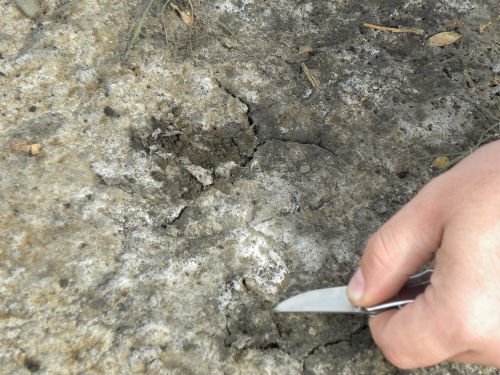With the drought our perpetual salt problems are exacerbated due to less water and often more saline water. The question keeps coming up if gypsum (calcium sulfate) can help correct the problem. And the answer is maybe, but along the coast, probably not. The problem there is confusion about what is a saline soil and what is a sodic soil. A saline soil is one that is dominated by salts, but has a pH below 8.5 and can have a white crust that will actually taste salty. A sodic soil is one dominated by sodium, has a pH above 8.5 and can be saline, as well. Often though, there is a brownish cast to the surface salt crust. This is caused by dispersion (dissolved) of soil organic matter caused by the high pH. It's like cooking with vinegar when you make ceviche out of fish. Saline soils often have a high calcium content and may have sodium, but at a very low ratio compared to calcium. Most of the sodic soils in California are found in the Central and Imperial Valleys. Along the coast, the soils, if they have a problem, are largely saline.
The way gypsum works, is that the added calcium displaces soil sodium, pushing it lower in the soil column. The process also requires a lot of water to move the sodium through the soil column.
So the answer is, along the coast, gypsum is unlikely to improve soil conditions. However, there are other instances where it might help. In the San Luis Obispo area there are lots of serpentine derived soils that have a high magnesium content relative to calcium. And they commonly aren't saline, just an imbalance between the two cations. This can lead to infiltration problems and calcium deficiency in plants. Apples are especially sensitive to this high Mg:Ca ratio and develop a condition called “bitter pit”, a surface, brown pitting in the skin. There are other crops, like celery that are especially sensitive, but even avocado can be mildly affected. In the case of magnesium imbalance, gypsum can help.
